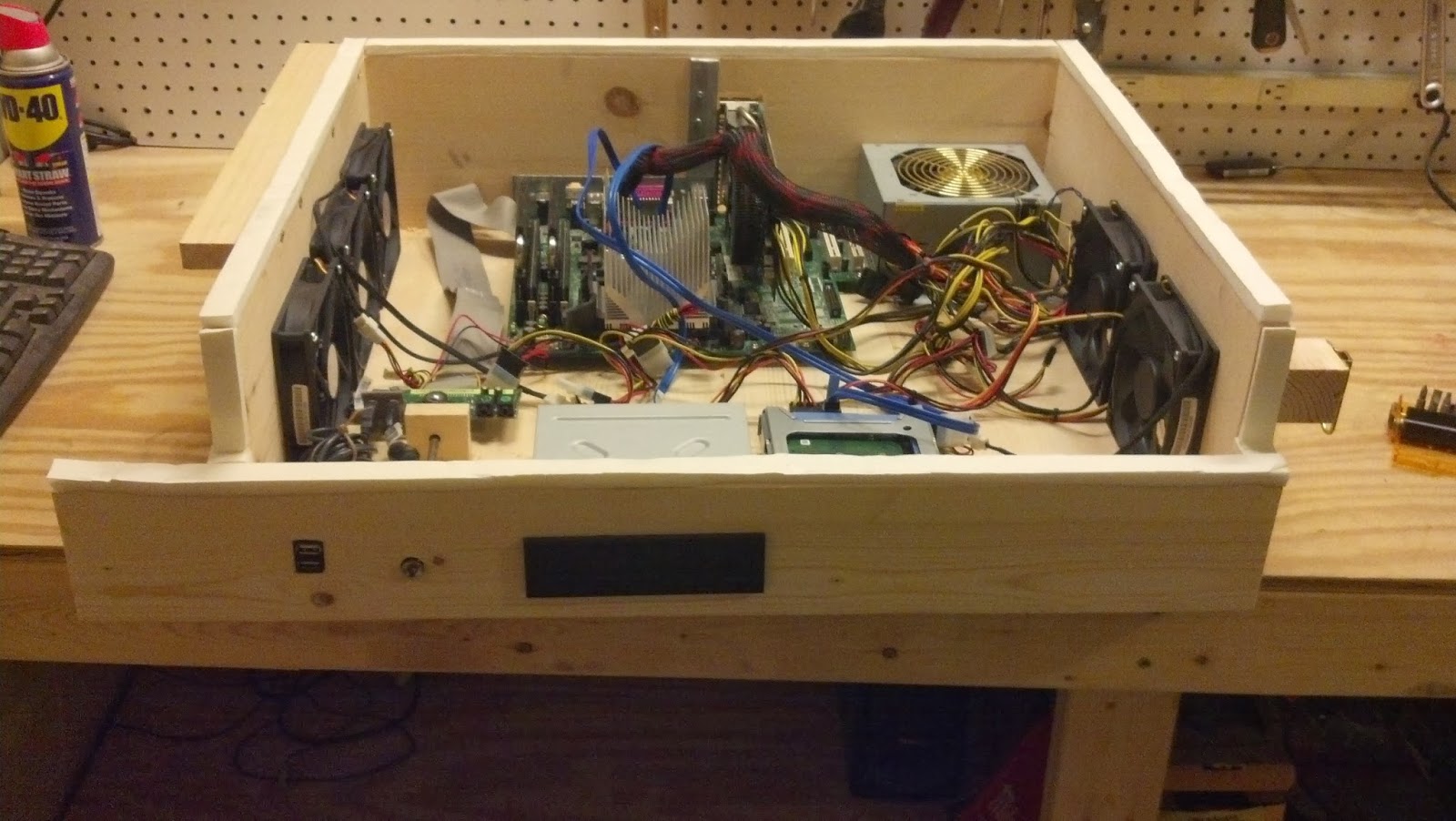Background:
My wife and I both wanted to upgrade the desks in our office. She had limited desk space to work on her crafty projects. Her desk was must simpler than what I have in mind for mine so I decided to do hers first.
I do have to apologize. I lost a lot of the pictures from when I was putting it together. I had a crash on my phone and some of the data got corrupted. It may be better to read this post twice to fully understand it all.
Piece description:
Desktop:
3-3/4" boards 8' long
Desk legs:
3-3/4" boards
Vertical stiffener (back of desk): 1 -5"x3/4" board from leg to leg
Horizontal stiffener (Front of desk):1 -5"x3/4" board from leg to leg
Shelves: 1 3/4" board.
Construction:
Slots in desk top for legs. Then glued legs to desktop.
Slot in legs for vertical stiffener. Then glued stiffener to legs and desktop.
Built shelves then attached them to the leg via dowels.
Materials:
3/4" pine stock left over from another project
Lots of polyurethane
Metal "feet"
Photos:
The desk top being put together.
I made the desk top out of three 3/4" thick boards that are doweled and glued together. I used my router table to join the edges first. I realized that my clamps weren't long enough to put clamp the boards, so, I made a custom jig to keep them closed. You can see the jig in the picture. The weight on top is to stop it from bowing up.
Side view of unfinished desktop.
You can see that I wasn't very exact in when I glued the boards together. I had to square the edges when I was done.
Desktop.
Close up of desktop.
You can see the glue drops. I had to sand these off when I was finished.
Desk legs.
For the desk legs I took a similar approach as the desktop. They are comprised of 3 3/4" boards doweled and glued together. I had the same problems with the clamps so I had to make some more jigs.
The other desk leg.
I put my tool box on top to stop it from bowing up.
Stiffener slot in the desk legs fix.
When I was routing the slot for the back vertical stiffener board, the guide fence slipped. To fix this I routed off the bottom corner of the leg and glued I new piece of board to it. Then rerouted the slot and used a trim bit to clean up the edge.
Urethaned.
Front show of shelves.
In this shot you can also see that I routed the edges of the desktop with a 45 degree chamfer bit.
Side view.
Here you can see where I slotted the back piece for the shelves. After I made that slot and glued the shelves and the back board together, I attached the whole thing to the side of the desk.
Back view.
Here you can see two things: Where I slotted the desk top for the legs and where I attached the vertical stiffener. The leg is slotted for the stiffener (on the left) and the stiffener is also glued to the desktop (top). I had accidentally over routed the slots for the legs, but the desk is going up against a wall so no one will see it.
Back view.
Here you can see the vertical stiffener (left), the slot for the leg (top) and the back of the shelving (right). You can also see where the repair was made to the leg. It is slightly discolored. I wasn't paying attention and glued the additional board such that the grains did not line up (oops).
Overview.
Here it is in the garage just prior to moving it in the house.
Top.
I was able to get it very shiny. I sanded the top with 90, 100, 180, and 220 grit paper in that order. This made it very smooth. Then after every coat I sanded with 220 grit paper to get it smooth again. I did this for each coat except the last. There are 5 coats total.
Installed in the office.
You can see I had to make sure it was high enough to go over the top of my wife's drawers but low enough to fit under the window. I used metal feet to ensure that I had adjustability. You can also get a close up of the shelves.
If you look close, under the desk top you can see the vertical and horizontal stiffener. The horizontal stiffener is just a 4"x3/4" board laid flat and glued to make the desktop a bit stiffer.
Other Notes:
I did much more sanding then I had originally thought I was going to do. Trying to get everything really smooth was a lot more difficult then I had anticipated.
Future Enhancements:
N/A
Things Learned:
You can never make a desktop too stiff.
Always double check that your guide fences are secure.
Sand, sand and then sand some more.
Clean your brushes carefully after every use. You will get a much better product in the end.
When making a repair, make sure the grains line up.
























































